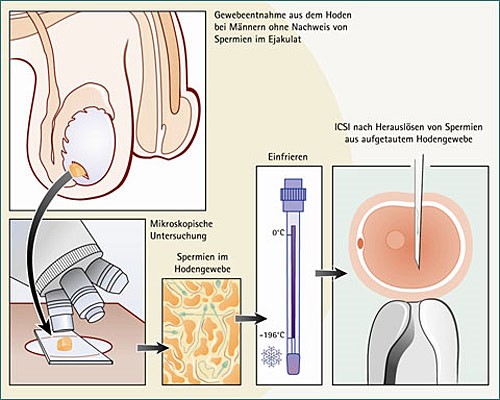Ways to wishing child
TESE and MESA
Prior vasectomy, congenital absence of the vas deferens (i.e. no sperm in the ejaculate but normal testicular sperm production, also referred to as obstructive azoospermia): IVF-ICSI with either Microsurgical Epididymal Sperm Aspiration (MESA) or Testicular Sperm Extraction (TESE).
With a MESA procedure, under local anesthesia and general sedation, an incision is made in the scrotum, exposing the epididymus, the tubules immediately adjacent to the testicles that collect the sperm. Using an operating microscope, an incision is made into these tubules and sperm is aspirated. Although millions of motile sperm can often be collected, this sperm has not acquired the ability to penetrate an egg and must be injected into eggs via the IVF-ICSI technique. The advantage of MESA over TESE for men with obstructive azoospermia is that sperm collected in this manner can usually be frozen, and even if his partner has to undergo more than one IVF procedure, the MESA should provide adequate sperm for all subsequent IVF procedures.


A TESE or testicular sperm extraction is a procedure that involves directly aspirating the sperm from the testes or obtaining sperm from a testicular biopsy. It is usually performed under local anesthesia block and can be done as an office surgical procedure. The disadvantage is that in many cases, testicular sperm is much more scarce and therefore difficult to freeze. Usually, there is only enough sperm recovered for one IVF case and if further IVF attempts are needed, the TESE procedure needs to be repeated.


